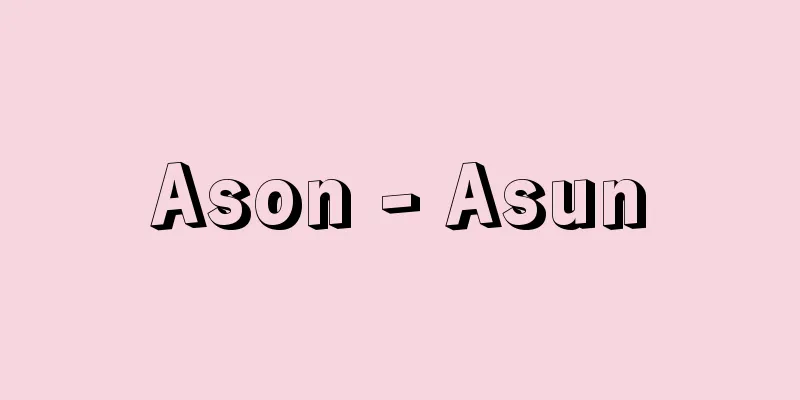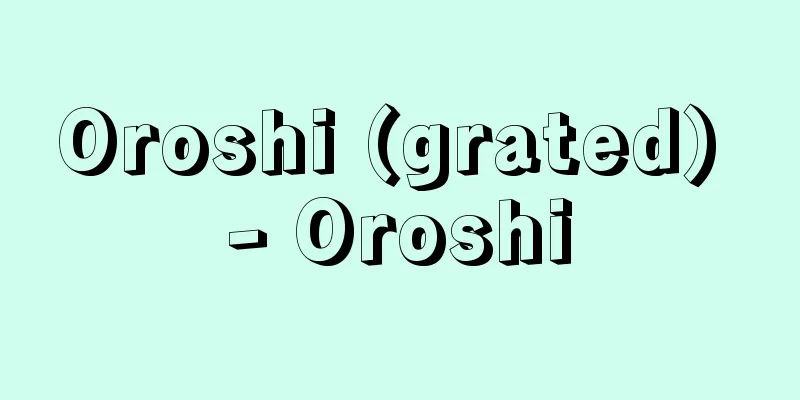Hiro - Hiro (English spelling) Hilo

|
It is the second largest city in the state of Hawaii, USA, and faces Hilo Bay on the east coast of the Big Island. It has a population of 40,759 (2000). It is an important market and distribution center for harvested agricultural products, with large-scale cultivation of sugarcane, macadamia nuts, coffee beans, papaya, and other fruits, as well as orchids, and its port is always bustling. It is also important as a base city for tourist and recreational destinations such as Hawaii Volcanoes National Park, and tourism is a major industry alongside sugarcane cultivation. The town was founded as a missionary site around 1820, and became a city in 1911. It has a large Japanese population. It is famous for the Lyman Museum, which has a collection of 19th century folk tools. [Kazuyo Sakuno] Source: Shogakukan Encyclopedia Nipponica About Encyclopedia Nipponica Information | Legend |
|
アメリカ合衆国、ハワイ州、ハワイ島東岸、ヒロ湾に臨む同州第二の都市。人口4万0759(2000)。サトウキビを中心にマカダミア・ナッツ、コーヒー豆やパパイヤなどの果物、ランなどの花の大規模栽培を行っており、収穫された農産物の市場・集散地として重要なため、港はつねに活気を呈する。また、ハワイ・ボルケーノズ国立公園など観光・行楽地の拠点都市としても重要で、観光産業はサトウキビ栽培と並ぶ主要産業となっている。1820年ごろ布教地として町が開かれ、1911年より市制が施行された。日系住民が多い。19世紀の民具などを集めたライマン博物館が有名。 [作野和世] 出典 小学館 日本大百科全書(ニッポニカ)日本大百科全書(ニッポニカ)について 情報 | 凡例 |
Recommend
Obata Seto - Obata Seto
A narrow strait in the southeastern part of Yamagu...
Kumihama [town] - Kumihama
A former town in Kumano County, on the northwester...
Humidifier - Kashitsuki
An electrical appliance used to prevent indoor ai...
precious stone
...Therefore, even if artificial crystals, or syn...
Soleil d'Or (English)
...This rose had the year-round flowering charact...
Ujina Port - Ujinako
...The prefectural capital of Hiroshima Prefectur...
bulldog bat
…General term for mammals belonging to the Noctil...
Cheng Chang Geng - Teichoukou
A Peking opera actor from the Qing Dynasty in Chi...
Molière - Morieru (English spelling)
French playwright and actor. His real name was Je...
Schultze, B.
...But Hitler's crackdown on "degenerate...
Printed earthenware - Inkamondoki
...All of these are vessels related to funeral ri...
Square net - Kakuami
A type of trap net. It consists of a fence net tha...
Amari-so - A little bit
...A branch of the Takeda clan. It began when Yuk...
One-minute sen - buichisen
One of the sources of income for the Muromachi Sho...
Residual deposit - Zanryukoushou (English spelling) Residual deposit
A mineral deposit is formed when useful components...







![Kurose [town] - Kurose](/upload/images/67cb735c21b7a.webp)

